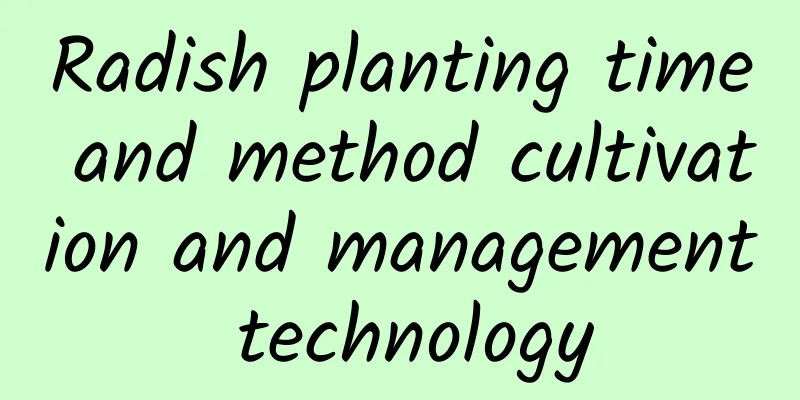What fertilizer is good for growing millet?

Fertilizer for growing millet1. Phosphorus fertilizer: It promotes the growth and maturity of millet. Adequate phosphorus fertilizer after flowering can reduce the number of barren grains and increase the thousand-grain weight. The amount absorbed from jointing to ear differentiation period accounts for 50% of the total absorption in life, and the amount absorbed from heading to flowering stage accounts for about 20% of the total absorption. 2. Nitrogen fertilizer: It promotes luxuriant stems and leaves, large ears and many grains. Millet absorbs very little nitrogen before jointing due to its slow growth due to its small seedlings. During the 30 days from jointing to ear differentiation, the stems and leaves grow and the young ears develop simultaneously, so there is a great demand for nitrogen fertilizer. 3. Potassium fertilizer: Applying an appropriate amount of potassium fertilizer can enhance the toughness of millet stalks and improve resistance. At the same time, it can provide sufficient nutrients to the grains and increase their weight. Millet absorbs the most potassium before heading. Millet base fertilizerSufficient base fertilizer needs to be applied between millet planting, which is the basis for increasing yield. All organic fertilizers, phosphorus fertilizers, potassium fertilizers, trace fertilizers and about one-third of nitrogen fertilizers can be applied as base fertilizers. Topdressing of milletTop dressing can be done 15-20 days before millet heading, which has the effect of increasing yield. Mainly apply nitrogen fertilizer, apply "fetal fertilizer" at the beginning of jointing, and apply "grain fertilizer" at the heading stage. In the late growth stage of millet, spray phosphorus fertilizer and trace element fertilizer on the leaves to promote early flowering and fruiting. Fertilizer for millet growing periodWhen the height of millet is 30 cm, the first topdressing can be done during the tillage and weeding, with 10 kg of urea applied per mu. The second topdressing can be done during the heading stage, with 15 kg of urea applied per mu. It is best to combine topdressing with rainfall. Fertilizer application during millet fruiting periodWhen using ammonium sulfate as seed fertilizer, the dosage should be 37.5 kg per hectare, and urea should be 11.3-15 kg. In addition, using farmyard manure and phosphate fertilizer as seed fertilizer can also effectively increase yield. The correct method of fertilizing millet1. When millet is just being sown, sufficient base fertilizer should be applied. The amount of base fertilizer should be determined according to the size of the sowing land. The base fertilizer is mainly farmyard manure, which is mainly to improve the fertility of the soil and lay a solid foundation for the good growth of millet in the future. Generally, about 8-10 kilograms of fertilizer can be applied per mu of land. 2. After applying the base fertilizer, topdressing should also be carried out in time during the growth process of millet. The topdressing of millet is generally carried out in three times. The first time is when the millet just sprouts. At this time, organic fertilizer is mainly used, which can speed up the growth of millet. 3. The second top dressing is during the rapid growth period of millet. At this time, you can add some compound fertilizer appropriately, because this is the time when millet needs a lot of nutrients, and the nutrients contained in compound fertilizer are very comprehensive, which is just suitable for the nutrients needed for millet growth during this period. 4. The third top dressing is when the millet is about to mature, and this top dressing mainly consists of nitrogen, phosphorus and potassium fertilizers, mainly to improve the quality of millet and the yield per mu, laying a good foundation for a good harvest. Notes on fertilizing milletWhen the millet seedlings grow to a height of 30 cm, they need to be fertilized in combination with tillage. Generally, urea is used, and it is best to do it after rainfall. During its production process, weeding is also very important. If there are too many weeds in the field, they will absorb nutrients in the soil, which will seriously affect the growth of the seedlings. |
<<: Can bamboo be grown in Northeast China?
>>: Can Phalaenopsis be planted in the ground?
Recommend
How to water the Jade Plant? This way the leaves will be more translucent!
Watering according to the seasons Spring and autu...
How to turn your flowers into blooming machines, so that there are so many flowers that you can never cut them all!
Kalanchoe 1. Re-cutting of branches 1. Re-cutting...
How to water Rainbow Jade
When to water When watering, you should base it o...
How much water to water succulents
1. How much water to pour 1. Acclimation period: ...
Is it profitable to grow cauliflower? Planting costs and profits
Can you make money growing cauliflower? It is qui...
Cultivation methods and precautions of wild roses
The habit of this plant First of all, it is a ver...
Cultivation methods and precautions of Christmas cactus
1. Water 1. Winter is the growing season for Chri...
Time and method for planting lettuce in the open field in the north
Time for planting lettuce in the open field in th...
How to grow papaya begonia
1. Alkaline loam The loam suitable for it needs t...
Can yew be exposed to the sun?
1. Can I sunbathe? Yew can be exposed to the sun,...
The flower language and symbolism of wintersweet
Flower Language Flower Language 1 High moral char...
Marigold planting methods and precautions
In the process of growing marigolds, the pH value...
How to grow a small potted fortune tree and the correct placement
1. How to raise 1. Water: The plant is not water-...
How often should I water Schefflera?
How often should I water Schefflera? The frequenc...
Can apricots be grown in the south?
Can apricots be grown in the south? Apricots can ...









